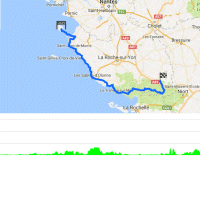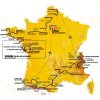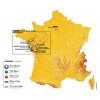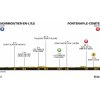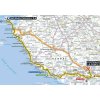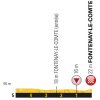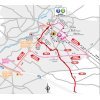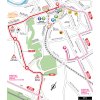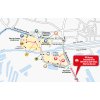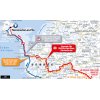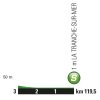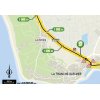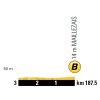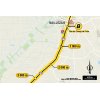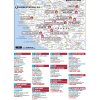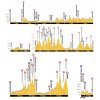Noirmoutier hosted the Tour de France before. This island off the Atlantic coast of France is connected to the mainland by bridge, yet on several occasions La Grande Boucle preferred to use the Passage du Gois, which is a paved-over sandbank. Twice a day the 4.5 kilometres passage is flooded by the high tide. In 1999, the slippery surface caused a fall in the peloton, resulting in a six-minute split. It was the 2nd stage, but the crash ended the hopes of pre-race favourites Zülle and Gotti and many others.
In 2018, the organisation shies away from the Passage du Gois. There is also a bridge and after leaving the village Noirmoutier-en-l’Île, the riders cross the bridge before stage 1 continues to Fontenay-le-Comte. Much of the route follows the twisting Vendée coastline, so cross winds and echelons could be lurking during the entire day.
The finish is in Fontenay-le-Comte, a village that never hosted the Tour de France before. The stage winner will be applauded three times as he takes both the yellow and green jersey, too.
But before that, the sprint. Fast men should be aware of two things – a tight right-hand turn with 1.4 kilometres left and the last 800 metres are an uphill false flat.
The first three riders on the line take time bonuses of 10, 6 and 4 seconds, while the first intermediate sprint (at kilometre 119.5) is for green jersey points and the second (at kilometre 187.5) for time bonuses of 3, 2 and 1 seconds.
Read also: results/race report 1st stage 2018 Tour de France.
Tour de France 2018 stage 1: Route maps, height profiles, and more
Click on the images to zoom
